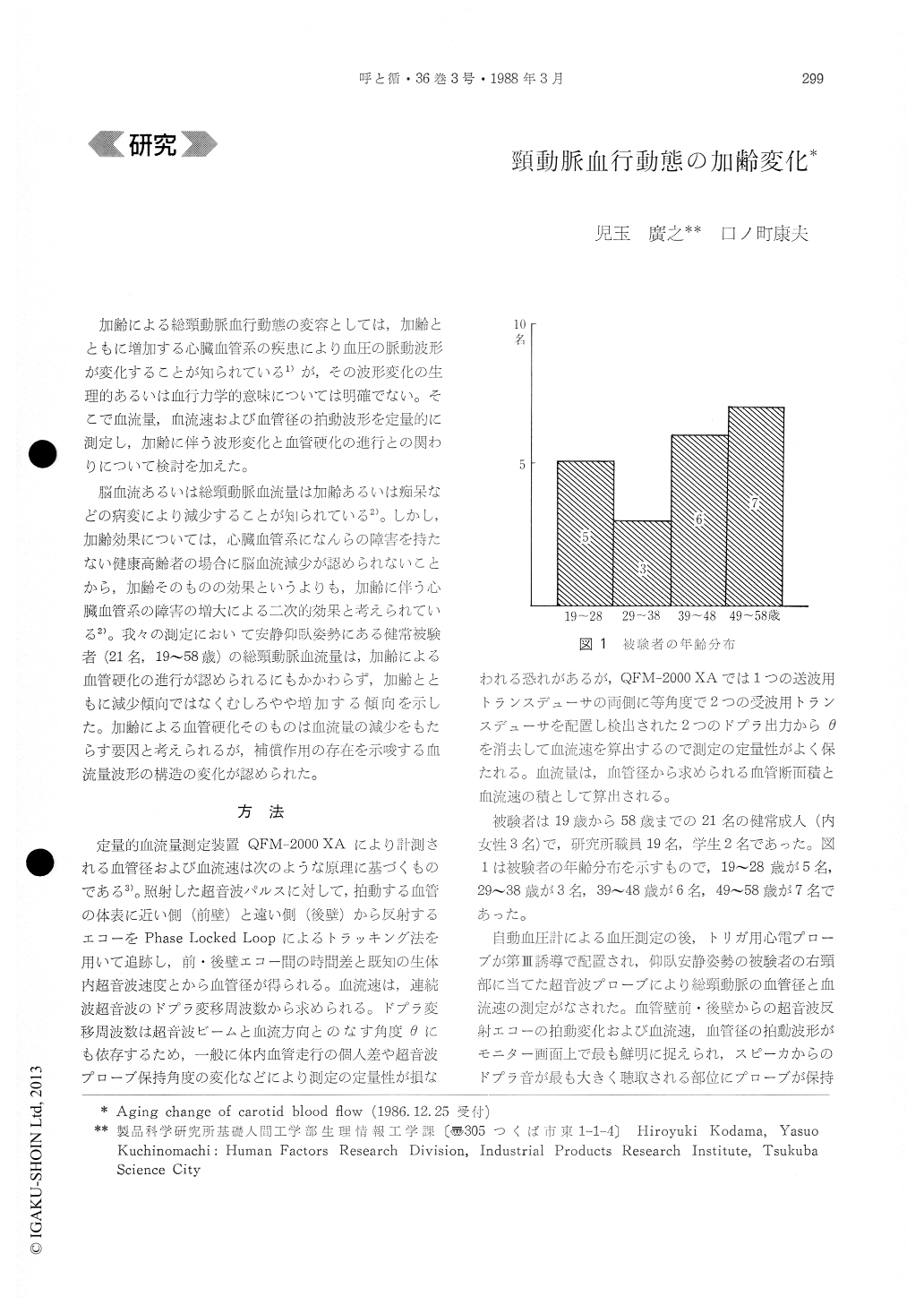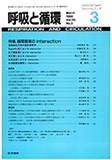Japanese
English
- 有料閲覧
- Abstract 文献概要
- 1ページ目 Look Inside
加齢による総頸動脈血行動態の変容としては,加齢とともに増加する心臓血管系の疾患により血圧の脈動波形が変化することが知られている1)が,その波形変化の生理的あるいは血行力学的意味については明確でない。そこで血流量,血流速および血管径の拍動波形を定量的に測定し,加齢に伴う波形変化と血管硬化の進行との関わりについて検討を加えた。
脳血流あるいは総頸動脈血流量は加齢あるいは痴呆などの病変により減少することが知られている2)。しかし,加齢効果については,心臓血管系になんらの障害を持たない健康高齢者の場合に脳血流減少が認められないことから,加齢そのものの効果というよりも,加齢に伴う心臓血管系の障害の増大による二次的効果と考えられている2)。我々の測定において安静仰臥姿勢にある健常被験者(21名,19〜58歳)の総頸動脈血流量は,加齢による血管硬化の進行が認められるにもかかわらず,加齢とともに減少傾向ではなくむしろやや増加する傾向を示した。加齢による血管硬化そのものは血流量の減少をもたらす要因と考えられるが,補償作用の存在を示唆する血流量波形の構造の変化が認められた。
Aging change of the pulsatile flow wave contour in carotid artery was transcutaneously and quantita-tively measured in 21 normal healthy subjects aged 19-58 years by means of ultrasound pulse and continuous wave Doppler method. This method determines the carotid vessel diameter pursuiting the echo pulses locked in phase and determines the blood velocity in the principle of continuous wave Doppler which uses one transmitting and two receiving transducers. From the diameter and the velocity, the blood flow is derived.
Stiffening of the artery with advancing age was manifested in reduced amplitude of the arterial wall pulsation, particularly in the reduction of its systolic first peak amplitude. Also, in both the velocity and the flow wave contour was recognized the reduction of their systolic first peaks. On the other hand, the systolic second peak was elevated with age either in the velocity or the flow. Although the amplitude of the second systolic peak in the arterial wall pulsation was reduced with age, the ratio to the first systolic peak amplitude was increa-sed. This increase of the second peak in the flow was accompanied by increase of the minimum flow and both increases were seemed to compensate the reduction of the first peak, resulting in a statisti-cally significant increase of the mean carotid blood flow.
Both increases of the second systolic peak flow and the minimum flow were correlated with the rise of the minimum blood pressure. Both differences of the first and the second systolic peak flow from the minimum flow were mutually correlated and also correlated with the stiffening of the artery. These are suggesting the regulation mechanism in the circulatory system to compensate the decline of the flow due to the stiffening of the artery.

Copyright © 1988, Igaku-Shoin Ltd. All rights reserved.


